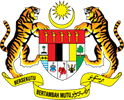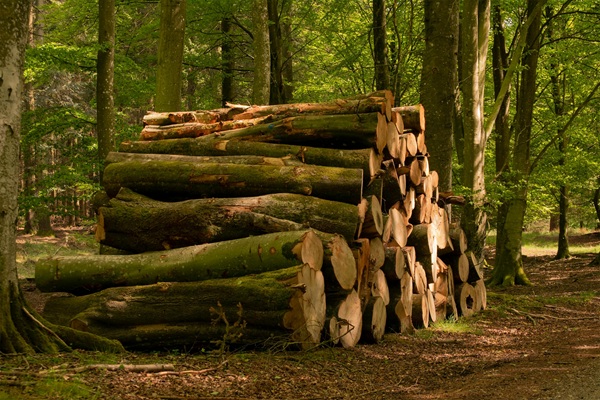
Oleh: Prof. Madya Dr. Mohd Hasmadi Ismail
Di dalam mengharungi arus pemodenan dan pembangunan seiring dengan perjalanan waktu, seringkali masyarakat terlepas pandang terhadap peri pentingnya persekitaran yang kita diami.
Satu kajian oleh Universiti Yale di Amerika menggunakan data satelit remote sensing telah menganggarkan bahawa muka bumi ini memiliki kira-kira 3.04 trilion batang pokok.
Kajian ini diterbitkan di dalam jurnal Nature pada tahun 2015. Namun apa yang telah dilaporkan ialah sebanyak 46 peratus daripada jumlah tersebut telah ditebang secara rakusnya sejak zaman ketamadunan manusia. Antara rumusan yang dibuat bahawa hutan yang berkepadatan tinggi adalah dari hutan tropika iaitu 43 peratus.
Hutan sering disebut dan diumpamakan sebagai paru-paru kepada bumi. Tidak dapat disangkal melalui kajian saintifik hutan mempunyai banyak kepentingan antaranya menyerap pencemaran gas karbon dioksida dan membekalkan oksigen kepada semua spesies hidupan melalui kitaran proses tertentu seperti pernafasan dan fotosintesis.
Selain itu, hutan juga membekalkan sumber kayu balak yang bermutu tinggi, menjadi span semulajadi yang berfungsi menyimpan air serta menyerap impak hujan dan bencana alam, sumber biodiversiti dan ekologi.
Aktiviti penuaian hutan atau pembalakan menyumbang kepada hasil negeri dan negara. Pada tahun 2015 hasil hutan menyumbang sebanyak 2.5% kepada ekonomi negara iatu kira-kira RM20 bilion. Realitinya pada masa ini kawasan hutan ini semakin mengecil dari tahun ke tahun dan semakin jauh kerana desakan keperluan pembangunan bagi memenuhi keperluan masyarakat.
Secara umumnya operasi pembalakan sering dilihat sebagai penyebab utama kepada kerosakan alam sekitar dan bencana di Malaysia. Namun kenyataan seperti ini tidaklah tepat kerana Malaysia mengamalkan sistem pengurusan hutan yang berkekalan antara yang terbaik di dunia.
Sistem Pengurusan Memilih (Selective Management System) atau SMS yang diperkenalkan pada tahun 1978 merupakan tunjang kepada kelestarian hutan yang mencakupi kepentingan nilai ekonomi, sosial dan alam sekitar.
Selain sistem SMS, penambahbaikan teknik pembalakan telah diperkenalkan iaitu pembalakan kurang impak (Reduced Impact Logging) atau RIL. Teknik RIL ini dimulakan di Sarawak pada tahun 1975. Di Semenanjung Malaysia Ko Amalan RIL telah didokumenkan pada tahun 2003.
Teknik RIL dilaksanakan selari dengan teknologi yang ada seperti jentera “logfisher” dimana ia juga mengambil kira kesan penilaian alam sekitar (EIA), Kriteria dan Petunjuk Malaysia (MC&I), standard dan amalan pengurusan hutan untuk megurangkan kesan negatif, seterusnya bagi membolehkan produk kayu negara mendapat pensijilan.
Manakala EIA pula telah diperkenalkan kepada aktiviti pembalakan pada tahun 1987 dengan merujuk kepada Akta Kualiti Alam Sekitar 1974.
Jabatan Perhutanan Semenanjung Malaysia (JPSM) juga mengeluarkan peraturan dan garis panduan seperti Garis Panduan Pembalakan, Spesifikasi Jalan Hutan, Garis Panduan RIL Semenanjung Malaysia dan juga mengamalkan Sistem Pengurusan Kualiti (QMS) MS ISO 9000:1994.
Garis Panduan Jalan Hutan 2010 telah diperkenalkan dan dikuatkuasakan pada 1 Januari 2011 bagi menggantikan Spesifikasi Jalan Hutan 1999 (Jalan tuju dan Lorong Penarik) untuk Semenanjung Malaysia.
Teknik RIL ini telah memberikan kesan kerosakan pada tahap terendah (20%) kepada pokok dirian tinggal atau stok, tanah dan kualiti air.
Manakala pembalakan dengan kaedah RIL juga telah terbukti dapat mengurangkan kerosakan pada dirian tinggal sebanyak 50% berbanding dengan pembalakan konvensional. Apa yang lebih penting ia dapat mengekalkan kapasiti pengeluaran hasil hutan dan melindungi alam sekitar.
Penyelidikan di dalam operasi dan kejuruteran hutan adalah perlu bagi menyokong pelaksanaan SMS terutamanya teknik RIL. Kebaikan yang diperolehi dari penyelidikan yang berterusan dalam bidang ini akan menambahbaik sistem operasi pembalakan. Ini kerana RIL memfokuskan kepada pembinaan jalan hutan, sistem penebangan berarah, amalan penarikan balak dan penggunaan jentera-jentera pembalakan secara yang betul.
Malaysia sentiasa komited di dalam menguruskan hutan dengan secara berkesan melalui pengurusan yang mesra alam. Dijangkakan jumlah keluasan kawasan pembalakan dari Hutan Simpan Kekal akan berkurangan daripada 18.31 juta hektar kepada 16.73 juta hektar menjelang tahun 2020.
Ini berdasarkan purata tahunan kawasan hutan yang telah dibalak sejak tahun 1985- 2014. Teknik pembalakan akan lebih menitikberatkan elemen –elemen pemeliharaan dan pemuliharaan kepada kepelbagian biodiversiti hutan dan perlindungan alam sekitar.
Menjelang tahun 2020 pengurusan hutan akan lebih tertumpu kepada integrasi pelbagai guna hutan untuk menjamin sumber air dan melindungi kesan bencana alam seperti banjir kilat yang kerap berlaku sejak kebelakangan ini.
Selain itu pengurusan hutan negara lebih sensitif terhadap fenomena mengenai pelepasan bahang atmosfera dari kawasan berhutan untuk mengawal kesan kepada perubahan iklim.
|

|
Prof. Madya Dr. Mohd Hasmadi Ismail
Ketua
Jabatan Pegeluaran Hutan
Fakulti Perhutanan,
Universiti Putra Malaysia
Tel: 03-89467220, 019-9720217
Emel: mhasmadi@upm.edu.my
|
Tarikh Input: 22/03/2017 | Kemaskini: 28/04/2017 | hairul_nizam
PERKONGSIAN MEDIA




























